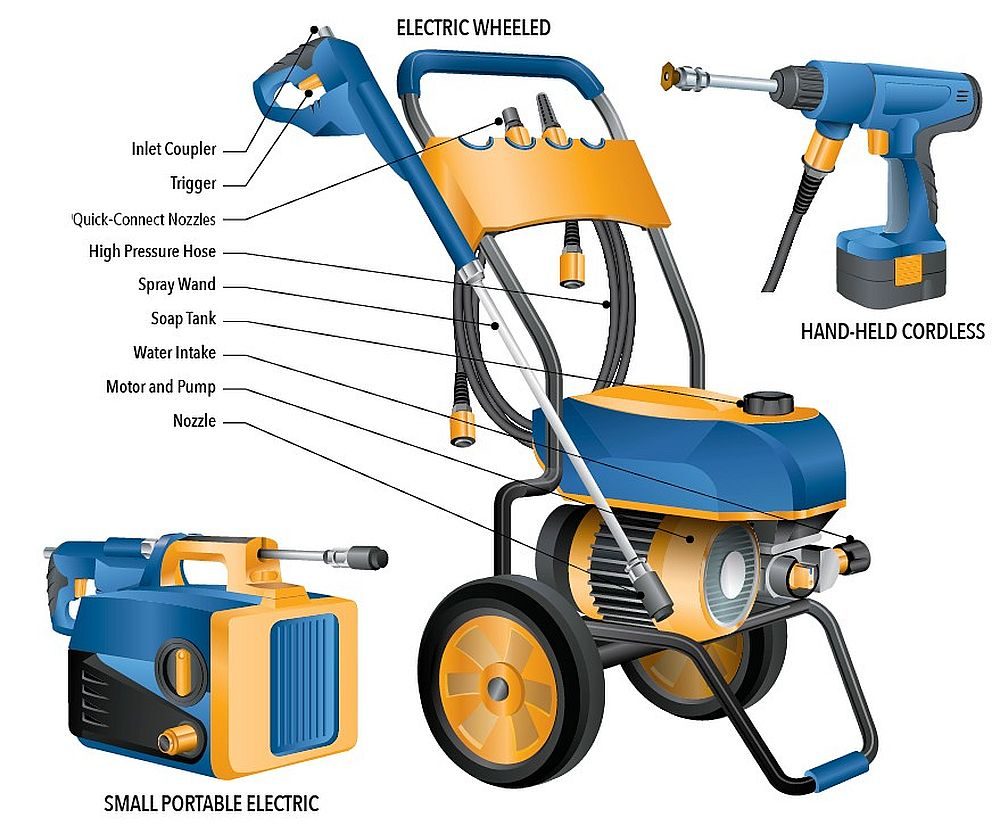
A pressure washer (PW) pumps water at high pressure through a hose and nozzle to clean various hard surfaces. Consumer PWs come in a variety of sizes and can be had as cordless, electric and gas models. They’re rated by the water pressure they deliver, measured in pounds per square inch (PSI). Gas-powered PWs deliver between 2,500 and 4,000+ PSI, making them ideal for cleaning concrete, stripping paint and tackling large surfaces. However, they’re heavy and noisy. Electric PWs are lighter and quieter, typically delivering between 1,500 and 2,500 PSI. They’re well-suited for a range of domestic cleaning jobs including decks, driveways, siding and vehicles. Battery-powered PWs are more portable and convenient, usually delivering under 1,000 PSI. They’re best for cleaning cars and patio furniture and accomplishing other small household tasks. A fully charged battery typically lasts 15 to 40 minutes, depending on the battery amp-hour rating and the washer’s PSI setting. In addition to water pressure, PWs are rated by water flow, measured in gallons per minute (GPM). A higher GPM allows a PW to clean a larger surface area more quickly and efficiently. Some PWs feature quick-connect nozzles that provide different spray patterns, while others come with turbo nozzles for increased cleaning power. Certain models can draw water from a bucket or other water source, while others require a hose connection. Many models feature onboard detergent tanks to enhance cleaning power.
Power source: gas, corded (120 AC), battery (18V – 60V)
PSI range: under 2,000 (light-duty); up to 3,000 (medium-duty); over 3,000 (heavy-duty)
GMP range: under 2.0 (light-duty); 2.0 to 2.5 (medium-duty); over 2.5 (heavy-duty)
Safety first
Because the water pressure is very high, PWs can cause serious injury. Wear safety goggles, closed-toe shoes or boots, and ear protection, especially with gas-powered models. Keep people and pets away from the work area and avoid spraying electrical outlets or wiring.
Choose the right nozzle
Nozzles are colour-coded to indicate spray patterns. Use the appropriate nozzle for the task — a wide spray is good for general cleaning, while a narrow spray is for tough stains.
Take the time to test
Test the spray on an inconspicuous area to ensure you don’t damage the surface. Start with a wider spray nozzle and low pressure and increase as needed. For tough stains, apply a cleaning solution and let it soak before spraying.
Spray like a pro
For best results hold the nozzle at an angle to the surface and use smooth, overlapping strokes. Generally, you’ll want to work from top to bottom to prevent streaks. When applying detergents, apply from the bottom up, and rinse from the top down.
Maintain your investment
Clean the nozzles regularly to prevent clogs and follow the manufacturer’s instructions for regular maintenance.
More articles in Know Your Tools


